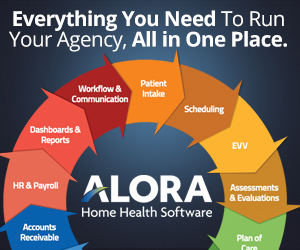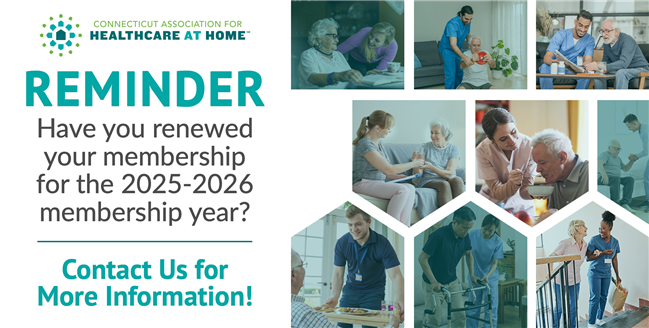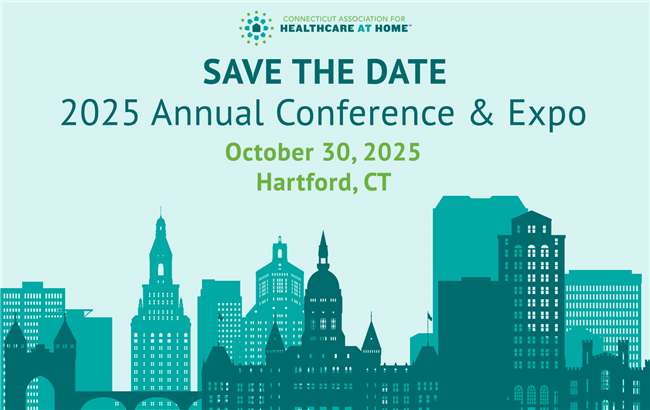 |
|||||||||||||||||||||
| July 10, 2025 | |||||||||||||||||||||
Op Ed by Tracy Wodatch
Note: This Op Ed was run in all Hearst media outlets on Saturday, July 5, 2025
Just a few short weeks ago, the legislative session in Hartford ended on a deeply disappointing note for thousands of Connecticut’s most vulnerable residents. Advocates for home-based care, along with the families we serve, spent months pleading with the governor and legislators to address a crisis two decades in the making. We asked for a meaningful increase in Medicaid reimbursement rates to stabilize a sector on the brink.
The response? A sympathetic but clear rejection, citing a familiar reason: the state simply didn’t have the revenue. Imagine our shock, then, when a mere 16 days after the session closed, the state announced it had identified an additional $190 million in projected revenues. The money, it turns out, may have been there all along.
Source: The Alliance Daily, July 7, 2025
This summary provides information for providers that deliver Medicaid-funded home and community-based services (HCBS) about provisions in the House Resolution 1, the One Big Beautiful Bill Act, also known as the “Reconciliation” bill. President Trump signed the legislation on July 4, 2025, and therefore the provisions below will now become law.
Overall, the legislation represents a large reduction in Federal Medicaid expenditures, with the Congressional Budget Office projecting a reduction in Federal Medicaid spending of over a trillion dollars between 2025 and 2034. Over the next few years, states will be forced to make challenging decisions about how to respond to these changes, including whether to “backfill” with additional state money and prevent reductions or whether to reduce state Medicaid spending commensurate with the loss of Federal matching funds. In the latter scenario, overall reductions at the service-level will be multiplied due to the loss of both state and Federal funds.
Source: Home Health Care News
The U.S. Centers for Medicare & Medicaid Services (CMS) released its CY 2026 home health proposed payment rule on Monday.
The rule projects a 6.4% aggregate reduction in Medicare payments to home health agencies in 2026, amounting to an estimated $1.135 billion decrease compared to 2025.
“The proposed CY 2026 updated rates include the proposed CY 2026 HH payment update of 2.4% ($425 million increase); an estimated 3.7% decrease that reflects the net impact of the proposed permanent behavior adjustment, required by statute, ($655 million decrease); an estimated 4.6% decrease that reflects the net impact of the proposed temporary adjustment ($815 million decrease); and an estimated 0.5% decrease that reflects the effects of a proposed update to the FDL ratio ($90 million decrease),” the CMS fact sheet read. “CMS estimates that Medicare payments to HHAs in CY 2026 would decrease in the aggregate by 6.4%, or $1.135 billion, compared to CY 2025, based on the proposed policies.”
Source: The Alliance, Home Care Insider, July 1, 2025
The U.S. Department of Labor (DOL) has released a Notice of Proposed Rulemaking that would restore key exemptions under the Fair Labor Standards Act (FLSA) for home care providers. If finalized, this rule would reinstate the companionship services and live-in domestic service exemptions that were in place prior to 2013.
As highlighted in its recent comment to the Office of Management and Budget’s Deregulatory Request for Information (RFI), the Alliance advocated for regulatory changes that would restore flexibility, continuity of care, and reduce administrative burdens for home care providers and the families they serve. The DOL’s action demonstrates that the collective voice of the Alliance and our members have been heard.
Under the current rule, third-party employers such as home care agencies are prohibited from claiming these exemptions, which require that most caregivers receive overtime pay and minimum wage protections. The proposed rule would roll back those limitations, allowing agencies to once again utilize the exemptions when appropriate.
On July 2, 2025, the federal government announced the formation of a new False Claims Act (FCA) enforcement task force aimed at the pharmaceutical, medical device, and health care industries. Attorneys from the Department of Health and Human Services (HHS) and the Department of Justice (DOJ) will begin working together immediately to identify enforcement priorities, including whether DOJ should intervene in existing whistleblower (qui tam) suits brought by private parties and whether HHS should suspend payments to providers based on credible allegations of fraud.
To read this advisory in its entirety, please click below.
Source: Decision Health
A fluid-restricted diet is considered a therapeutic diet for K0520D (Nutritional approaches - therapeutic diet) if the patient’s fluid restriction is prescribed in order to manage a disease or clinical condition, CMS clarified in the recent July quarterly OASIS Q&As.
This was in response to a question asking if this type of diet should be considered under the OASIS item.
The intent of K0520 is to assess and report which of the listed nutritional approaches apply to the patient, CMS states in their response.
“Therapeutic diets are not defined by the content of what is provided or when it is served, but why is the diet required,” they add.
This was one of 10 questions included in the most recent update.
Additional topics covered in the July release include:
Editor’s note: To view the full CMS July 2025 quarterly OASIS Q&As, visit here.
Source: Teleios Collaborative Network (TCN), June 30, 2025
The countdown has begun. With October 1 on the horizon, hospice teams across the country are deep into training and testing—but preparation alone won’t guarantee success. The shift to HOPE isn’t just operational; it’s cultural. And real readiness goes far beyond timelines and task completion. It demands that every clinician, across every shift and care setting, understands what’s changing and feels confident in how to respond. This is the critical moment when planning must translate into practice—because once HOPE is live, the margin for error disappears.
Source: New York Post, July 3, 2024
No one gets out of life alive — but one expert says we can take steps to make sure we leave the earthly plane riding the high of a “good death.” “While 80% of people want to die at home surrounded by loved ones, only 30% actually do,” End Well founder Dr. Shoshana Ungerleider told The Post. “This massive gap reflects our system’s inability to honor what patients actually value.” As our cultural relationship to mortality has changed, Ungerleider notes that we have become disconnected from the process of death and, in turn, fail to plan appropriately for it. But if you’re not sure where to start, she has a helpful checklist of everything you should be doing to avoid a “bad death.”
Connecticut Association for Healthcare at Home is a proud member of the Center to Advance Palliative Care (CAPC), the nation’s leading resource dedicated to increasing the availability of quality, equitable health care for people living with a serious illness. CAPC is offering a 15% discounted membership rate to Connecticut Association for Healthcare at Home members. CAPC members receive exclusive access to clinical training through a robust online course curriculum with free continuing education credits; small-group consulting with national experts in the palliative care field; hundreds of ready-to-use tools and technical assistance; webinars on hot topics; and a vibrant, collaborative community of health care professionals working with people living with a serious illness. One CAPC membership provides an organization’s entire staff with full access to CAPC training, tools, and expert resources. Learn more at capc.org or contact the CAPC membership team at membership@capc.org.
|
|||||||||||||||||||||
| Past Issues | Subscribe | cthealthcareathome.org | Advertise with Us | |||||||||||||||||||||




